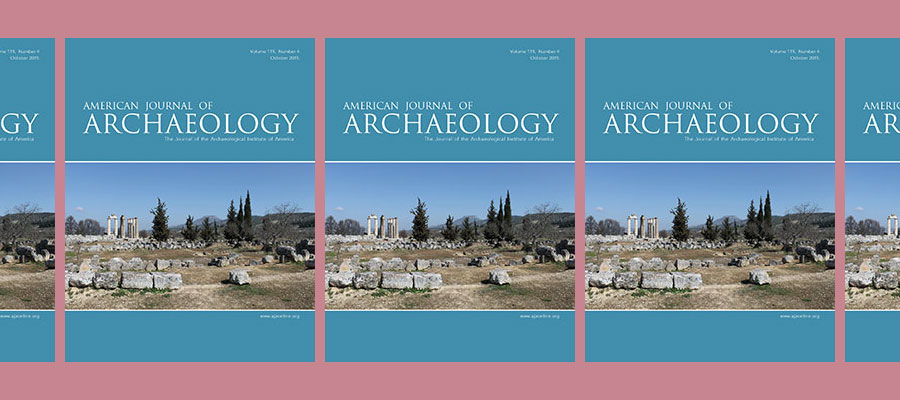American Journal of Archaeology, volume 119, no. 4 (October 2015).
CONTENTS INCLUDE
Olive Oil Pressing Waste as a Fuel Source in Antiquity
Erica Rowan
While wood and charcoal were undoubtedly the most widespread and commonly used fuels in antiquity, they were not the only sources of fuel, nor were they always the least expensive or the most favored. Cereal chaff, dung, coal, and animal fats, among others, were also used. There is growing scholarly recognition of the use of secondary fuels in the ancient world, particularly with reference to the production of a specific good, such as pottery. Olive oil pressing—so-called press cake, or pomace, the solid material that remains after the oil is collected—provide an underrated yet highly archaeologically observable example of these secondary fuels. The carbonization process turns material into a mass of carbon that does not decompose, is impervious to microbial attack, and does not react with other minerals and chemicals. Thus, the burning of pomace leaves behind fragments of carbonized olive stone, which are durable and invulnerable to decay.
Memory, Tradition, and Christianization of the Peloponnese
Rebecca J. Sweetman
This work examines the use of memory and tradition in the Christianization of the Peloponnese based on the evidence of the location and topography of churches. The different processes of conversion in the area have already been discussed, and the focus of this work is to show the extent of continuation of religious practice from the Roman to Late Antique periods. A diachronic analysis of the evidence for towns and sanctuaries from the fourth to seventh centuries is presented. It is argued that throughout the different Christianization processes memory and tradition were managed by the church in terms of its location, architecture, and rituals. It is likely that the church consciously maintained certain traditions of place, imagery, and action in order to retain and use memory traces from the established religious structures, which helped situate the Christian church as a central element of community life and identity. Therefore, it is contended that an essential element of the Christianization process was to maintain earlier memories and traditions not only to enable an efficiently unobtrusive conversion for its long-term success but also to ensure the maintenance of existing social structures, which in turn sustained the church.
Using Images in Late Antiquity
Review by Alice Landskron
